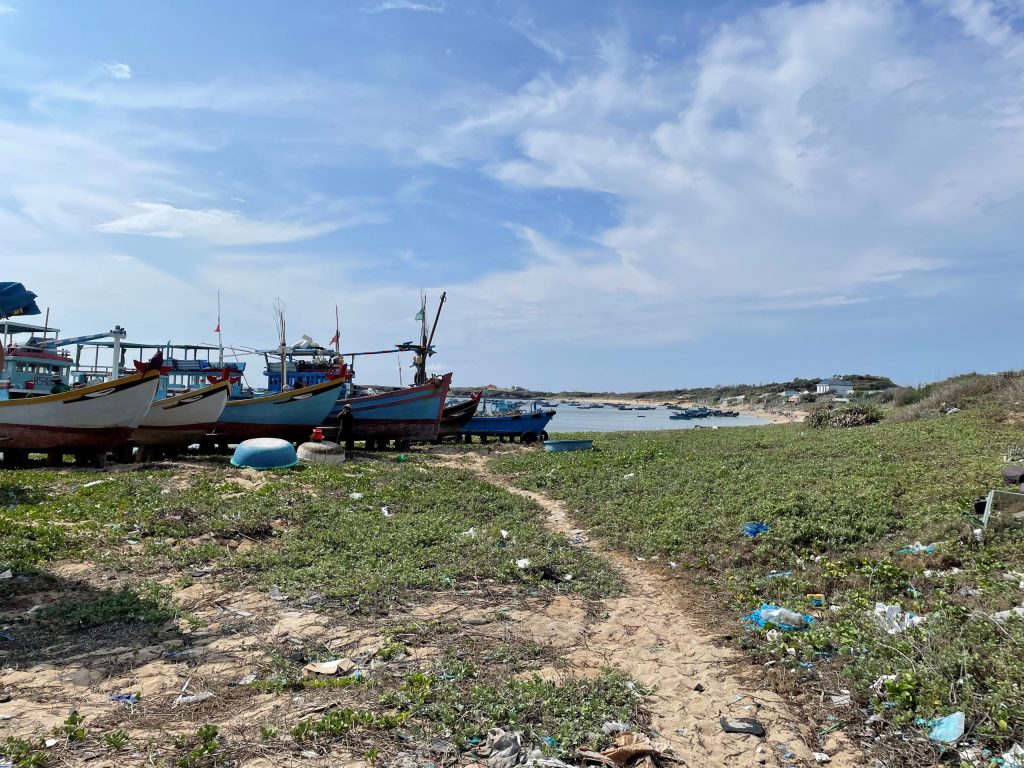During our research on the formation and development of Phú Quý Island, we came across several articles by local historian Lê Hữu Lễ, published in the Special Study on Phú Quý (Issue 78.2010) of the Journal of Research and Development. These articles mention two historical epidemics on Phú Quý: the plague and the fly infestation. These events occurred more than a hundred years ago. Out of respect for history, we would like to recount them here. Today, Phú Quý is a clean, fresh, and healthy island district.
The Plague
In the past, plague outbreaks occurred almost annually on Phú Quý Island, usually beginning in October and lasting until February. The year 1925 was recorded as a historic year for the plague, which claimed many lives and became a terrifying memory for the island’s residents.
Initially, people noticed an overwhelming number of tiny rats, about the size of a finger, swarming from farms, hillsides, homes, gardens, and alleys—rats were everywhere. These rats devastated crops and caused severe agricultural losses by gnawing through produce and burrowing extensively, resulting in widespread material damage.
At the time, entire families were struck by grief, with some losing all their children in a single day. In some cases, entire neighborhoods were infected and perished so rapidly that there wasn’t even time for burial. A charitable organization named “Ban Làm Phước” (Benevolent Committee), led by Mr. Nguyễn Quen—father of Mr. Nguyễn Tạc, currently residing in Tây Hamlet, Long Hải—took on the task of managing burials for the unfortunate deceased who had no relatives. The committee also pledged that if the epidemic ended, they would offer a buffalo in gratitude to the local deities.
Upon hearing about the devastating outbreak, a provincial medical team led by nurse Ung Văn Vy was dispatched to the island to combat the epidemic. The delegation explained the dangers of the plague and urged residents to bring the infected to a medical facility equipped with medicine. However, due to the high number of deaths in the facility, people grew fearful and began hiding sick individuals at home, which caused the disease to spread even faster to neighbors. Those who refused to comply were fined in cash.
To curb the epidemic, Mr. Ung Văn Vy launched a rat extermination campaign, enlisting a clerk from Tuy Phong to travel to the island and buy rats and rat tails. The rate was set at ½ xu per adult rat, and 1 xu per dead baby rat dipped in lime and dried. Instantly, people took to the fields with hoes and traps to catch rats. Thanks to this initiative, the plague was eventually eradicated and has not returned since.
The Fly Infestation
During the humid southern wind season, known locally as the “láng” season when the air is calm, the island experienced an overwhelming number of flies. In contrast, during the northeast monsoon, the number of flies would slightly decrease due to stronger winds.
Some individuals took it upon themselves to run household-level fly extermination campaigns, with each family managing to kill 1–2 kilograms of flies per day. However, due to a lack of community support, others questioned the effort: “Why kill flies when nobody else does, and they’ll just come back anyway?” As a result, the individual efforts faded away, and fly populations continued to grow unchecked.
At the time, locals did not consider flies dangerous. Many believed that if flies truly carried deadly diseases, the entire island would already be dead. Visitors were shocked to see how indifferent residents were, allowing flies to land on food without concern and consuming it without hesitation. There were no organized plans to eradicate the flies.
Hygiene and public health regulations—including prohibitions against consuming meat from diseased animals, and heavy penalties for failing to report disease outbreaks—were implemented during the reigns of Emperors Thành Thái, Duy Tân, and Bảo Đại. These laws helped raise awareness of disease prevention among the population. In later periods, the authorities also introduced strict public health management measures, significantly reducing infection sources and fatalities from epidemics.
This article is excerpted from the Special Study on Phú Quý by author Lê Hữu Lễ.










